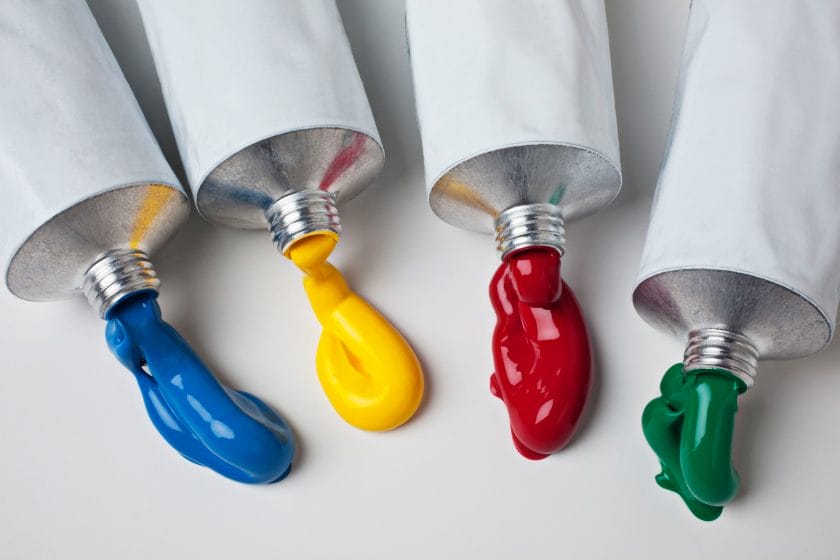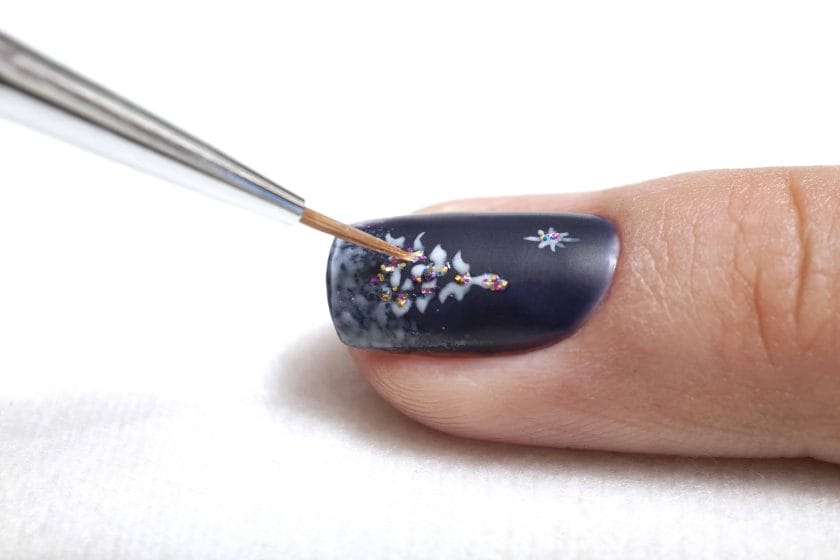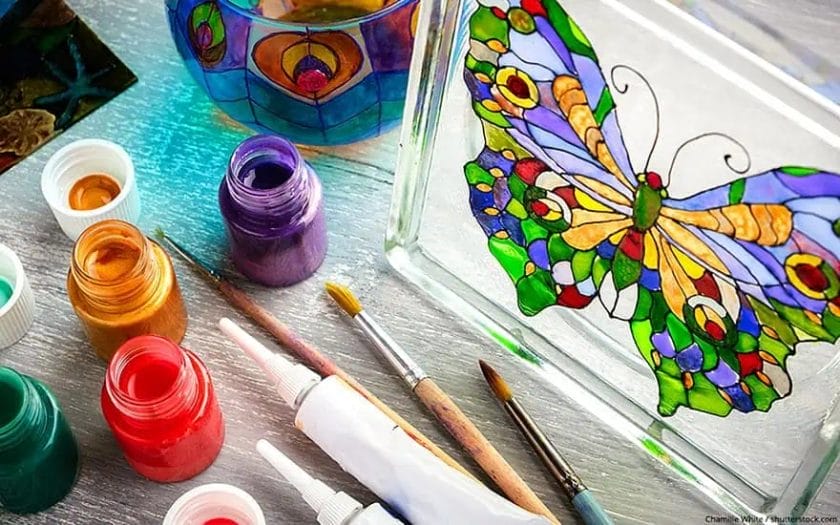If you’re an avid Warhammer enthusiast, you may have wondered if any acrylic paint will do the trick for your miniatures. The answer is yes! While Citadel paints are specially formulated for Warhammer, any high-quality acrylic paint can be used. From vibrant colors to smooth application, acrylic paints offer versatility and excellent coverage. Just ensure that the paint is thinned properly, and you’ll be ready to bring your Warhammer miniatures to life with any acrylic paint of your choice.

Tips for Choosing the Right Acrylic Paint for Warhammer
When it comes to painting Warhammer miniatures, using acrylic paint is essential. Acrylic paint provides the versatility and durability needed to bring these intricate models to life. However, with so many options available on the market, choosing the right acrylic paint for Warhammer can be overwhelming. In this section, we will provide you with some useful tips to help you make an informed decision.
1. Consider the Brand
When selecting acrylic paint for Warhammer, it is important to consider the brand. Some well-known brands, such as Citadel, Army Painter, and Vallejo, are specifically formulated for miniature painting. These brands offer a wide range of colors and have a good reputation for their quality and consistency.
It is always a good idea to do some research and read reviews to find out which brands are highly recommended by experienced Warhammer painters. Experimenting with different brands can also help you discover your personal preferences.
2. Check the Paint Consistency
The consistency of acrylic paint plays a crucial role in achieving smooth and even brushstrokes. Warhammer miniatures require precise detailing, so it is important to choose acrylic paint that has a good consistency for this purpose.
Acrylic paints typically come in three consistencies: heavy body, fluid, and craft. Heavy body paints have a thicker consistency, making them suitable for impasto techniques or textured effects. Fluid paints have a medium consistency and are ideal for layering, glazing, and fine details. Craft paints have a thinner consistency and are often cheaper, but they may not provide the same level of control and coverage as miniature-specific paints.
For Warhammer painting, it is recommended to use paints with a medium consistency, such as fluid paints, as they allow for greater control and precision.
3. Color Range and Availability
The color range and availability of acrylic paints are important factors to consider when choosing the right paint for Warhammer. Warhammer miniatures often require a wide range of colors to create intricate details and effects.
Check if the brand you are considering offers a comprehensive color range that includes both basic colors and specialty shades. Having a diverse color selection will give you more flexibility in your painting projects.
It is also worth considering the availability of the paint. Ensure that the brand you choose has a consistent supply of the colors you need. Running out of a specific color in the middle of a project can be frustrating, so it is best to choose a brand that is readily available.
4. Test and Compare
Before committing to a particular brand or color, it is advisable to test and compare different acrylic paints. Many hobby stores offer paint swatches or sample pots that allow you to try out various colors and brands.
Testing the paint will give you a better understanding of its consistency, coverage, and color accuracy. It will also help you determine how well the paint adheres to the miniature surface and how it behaves when mixed with other colors.
Comparing different paints side by side will enable you to identify the nuances and qualities of each brand, helping you make an informed decision.
5. Consider your Painting Style and Techniques
Lastly, consider your own painting style and techniques when choosing acrylic paint for Warhammer. Different painters have different preferences when it comes to paint characteristics.
If you prefer smooth blending and layering, you may prioritize paints with high pigment density and good transparency. On the other hand, if you enjoy dry brushing and weathering techniques, you may opt for paints with a thicker consistency.
Understanding your own style and techniques will guide you in choosing paints that complement your skills and enhance your overall painting experience.
In summary, choosing the right acrylic paint for Warhammer is a crucial step in achieving high-quality paintjobs. By considering factors such as brand reputation, paint consistency, color range, availability, and your own painting style, you can make an informed decision and find the perfect acrylic paint that meets your needs.

How to Use Acrylic Paints for Warhammer Miniatures
Warhammer is a popular tabletop miniatures game that allows players to engage in epic battles using intricately detailed models. Painting these miniatures is an essential part of the hobby, as it brings the characters and armies to life. Acrylic paints are the preferred choice for many Warhammer enthusiasts due to their versatility, ease of use, and wide range of colors available. In this section, we will provide a step-by-step guide on how to effectively use acrylic paints for Warhammer miniatures.
Gather Your Materials
Before you start painting your Warhammer miniatures, it is important to gather all the necessary materials. Here is a list of items you will need:
- Warhammer miniatures
- Acrylic paints
- Paintbrushes in various sizes (fine detail, medium, and large)
- Palette or paint mixing surface
- Water container
- Palette knife (optional, for mixing paints)
- Masking tape or blue tack (optional, for masking off areas)
- Primer (optional, for preparing the miniature surface)
- Varnish (optional, for protecting the finished paint job)
Prepare Your Miniature
Before you begin painting, it is important to properly prepare your Warhammer miniature. This involves cleaning any mold lines or imperfections, assembling the model, and priming the surface if desired. Priming helps the paint adhere better to the miniature and provides a smooth base for your colors.
Choose Your Paint Scheme
One of the most exciting aspects of painting Warhammer miniatures is choosing a unique paint scheme for your army. You can create your own color combinations or take inspiration from the official Warhammer lore. Look for reference images or color guides online to help you visualize your desired paint scheme.
Thin Your Paints
Acrylic paints can be thick straight from the tube, making them difficult to work with for miniatures. To achieve smoother and more controlled brushstrokes, it is important to thin your paints with water or a specialized acrylic thinner. Aim for a consistency similar to milk, as this will allow the paint to flow easily without obscuring any fine details.
Layering and Highlighting
Layering and highlighting are essential techniques in miniature painting that add depth and dimension to your models. Start by applying a base coat using a medium-sized brush, covering the larger areas with your chosen color. Then, using a smaller brush, layer lighter shades of the same color on raised areas to create highlights. This technique creates a visually appealing gradient effect.
Shading and Washes
Shading and washes are used to add shadows and depth to your miniatures. You can achieve this by applying a thinned-down darker shade of paint or a specialized wash to the recessed areas and crevices. The wash will flow into the recesses, creating natural-looking shadows and enhancing the details of the model.
Detailing and Fine Brushwork
Once you have applied the base colors, highlights, and washes, it’s time to add fine details to your miniatures. Switch to a small brush with a fine point to paint intricate patterns, symbols, or details such as eyes, weapons, or armor trim. This requires a steady hand and patience, but it can greatly enhance the overall look of your miniature.
Protect Your Finished Miniatures
After spending hours painting your Warhammer miniatures, it is important to protect your hard work. Applying a varnish or protective sealant will help protect the paint job from chipping or fading over time. There are both matte and gloss varnishes available, so choose the finish that best suits your preferences.
Experiment and Practice
Painting Warhammer miniatures is an art form that requires practice and experimentation. Don’t be afraid to try different techniques, color combinations, and styles to find what works best for you. Remember, every painter develops their own unique style over time, so enjoy the process and have fun!
In summary, using acrylic paints for Warhammer miniatures allows for a wide range of vibrant colors and versatility. By following the step-by-step guide provided, you can achieve stunning paint jobs on your miniatures, bringing them to life on the tabletop battlefield.

Essential Tools for Acrylic Painting on Warhammer Figures
When it comes to painting Warhammer figures, acrylic paints are the preferred choice for most hobbyists. They offer a wide range of colors and allow for easy mixing, blending, and layering. However, to achieve the best results, it is essential to have the right tools at your disposal. In this section, we will discuss the essential tools you need for acrylic painting on Warhammer figures.
1. Paint Brushes
The first and most important tool you will need is a set of paint brushes. Investing in high-quality brushes can make a significant difference in the outcome of your painting. Look for brushes made specifically for miniature painting, as they are designed to handle the fine details of Warhammer figures. Ensure you have a variety of brush sizes, including small brushes for intricate details and larger brushes for basecoating and layering.
2. Palette
A palette is essential for mixing and diluting your acrylic paints. You can choose from various options, such as a traditional wooden palette or a disposable palette pad. Whichever you choose, make sure it is large enough to accommodate your paint colors and allows for easy mixing.
3. Paints
Acrylic paints come in a vast array of colors, and it’s crucial to choose high-quality paints specifically formulated for miniature painting. Look for paints with good pigmentation and a smooth consistency for easy application. Additionally, consider investing in a range of shades and tones to create depth and highlights in your Warhammer figures.
4. Primer
Priming your Warhammer figures is an essential step before painting. A primer creates a smooth and even surface for the paint to adhere to. You can choose from different types of primers, such as spray-on primers or brush-on primers. Select a primer color based on the overall color scheme of your figures, as it will act as the base layer for your paint job.
5. Palette Knife
A palette knife is a versatile tool that can be used for mixing paints, applying texture, or creating specific effects on your Warhammer figures. It allows for more controlled blending and can be useful for creating highlights and shadows.
6. Water Container
Having a water container nearby is essential for cleaning your brushes between color changes or when you need to thin your paints. Use a container with a wide mouth, such as a jar or cup, to allow for easy rinsing and cleaning of your brushes.
7. Painting Station
Creating a dedicated painting station will help keep your tools organized and ensure you have a comfortable and well-lit workspace. Consider investing in a painting palette with compartments to hold your paints, brushes, and other tools. Additionally, having good lighting, such as a desk lamp with adjustable brightness, will make it easier to see the fine details of your work.
8. Varnish
Once you have completed your painting, it is crucial to protect your work with a varnish. Varnish provides a protective layer that helps prevent chipping, fading, and damage over time. You can choose from matte, satin, or glossy varnishes depending on the desired finish of your Warhammer figures.
By having these essential tools at your disposal, you will be well-equipped for acrylic painting on Warhammer figures. Remember to always practice and experiment with different techniques to improve your painting skills and bring your miniatures to life.
Advanced Techniques for Achieving Realistic Effects with Acrylic Paints on Warhammer Models
Warhammer models are beloved by hobbyists and enthusiasts alike for their intricate details and vibrant designs. To truly bring these models to life, mastering the art of painting with acrylics is essential. In this section, we will explore advanced techniques that can help you achieve realistic and eye-catching effects with acrylic paints on your Warhammer models.
1. Layering
Layering is a technique that involves building up thin layers of paint to create depth and dimension on your models. Start by applying a base coat and let it dry completely. Then, mix a slightly lighter shade of the same color and apply it to the raised areas of the model. Repeat this process with progressively lighter shades, focusing on the edges and areas that would naturally catch light. This technique will give your models a subtle gradient and make them appear more three-dimensional.
2. Drybrushing
Drybrushing is a technique that allows you to add texture and highlights to your models. Dip a dry brush into a small amount of paint and then wipe off most of it on a piece of tissue paper or cloth. With very light and quick strokes, brush the raised areas of the model. The paint will catch on the raised surfaces, creating a highlighting effect. Drybrushing works especially well on rough surfaces like fur or stone, adding depth and realism to your models.
3. Glazing
Glazing is a technique that involves applying very thin layers of translucent paint to subtly change the color or tone of a surface. Mix a small amount of paint with a glazing medium or water to thin it down. Apply the glaze over the area you want to change, allowing the underlying layers to show through. Glazing can be used to add subtle shadows, adjust the overall color temperature, or create a blended transition between two colors. It requires patience and control, but the results can be stunning.
4. Wet Blending
Wet blending is a technique that allows you to create smooth transitions between colors by blending them while they are still wet. Start by applying your base coats and let them dry slightly. Then, apply the colors you want to blend side by side, making sure they overlap slightly. Use a clean, damp brush to gently blend the colors together while they are still wet. The key is to work quickly and smoothly to achieve a seamless transition. Wet blending is particularly effective for creating gradients and soft transitions on large flat surfaces.
5. Object Source Lighting (OSL)
Object Source Lighting is a technique that simulates the effect of a light source on your model, creating a striking and dramatic look. Start by identifying the light source in your scene, such as a glowing weapon or a magical spell. Paint the area around the light source with a dark base color and gradually build up lighter colors towards the center of the light. Add small touches of brighter colors on the edges closest to the light source to create the illusion of glowing. OSL requires careful planning and observation of light and shadow, but it can elevate your models to a whole new level.
6. Weathering
Weathering is a technique that adds wear and tear to your models, making them look battle-hardened and realistic. There are several ways to weather your Warhammer models, including drybrushing with metallic paints to simulate chipped paint or rust, applying washes to bring out details and add grime, and using sponge or stippling techniques to create texture like mud splatters or dust. Experiment with different weathering techniques to give your models a sense of history and character.
These advanced techniques require practice and patience, but once mastered, they can take your Warhammer models to the next level. Remember to experiment, learn from your mistakes, and most importantly, have fun with the process. Happy painting!
FAQs
Can I use any acrylic paint for Warhammer?
Yes, you can use any acrylic paint for painting Warhammer miniatures. However, it is recommended to use paints specifically designed for miniatures and models, as they have a higher pigment concentration and better consistency for detailed work.
Conclusion
In conclusion, choosing the right acrylic paint for your Warhammer miniatures is crucial to achieve the best results. While any acrylic paint can technically be used, it is recommended to use paints specifically designed for miniature painting. These paints offer better viscosity, coverage, and color range, allowing for more precise and detailed work.
Investing in high-quality miniature paints will not only enhance your painting experience but also produce stunning and professional-looking results. Remember to properly thin your paints, use a suitable primer, and practice different painting techniques to bring your Warhammer miniatures to life.
So, don’t settle for just any acrylic paint when it comes to painting your Warhammer models. Choose the right tools for the job and unleash your creativity on the battlefield!
